We’ve all noticed the first ding in our new car. At first, you don’t see it when looking straight on. But at just the right angle that dent is very, very noticeable. Or place a glossy magazine cover next to a piece of matte printer paper. Take a step back and look across the plane of both. The magazine cover appears more uneven than the matte paper. The flaws in your shiny car door and the magazine cover are noticeable because light shining across them at a glancing angle reflects off the indented surface areas, highlighting and magnifying irregularities. The light at these angles is considered “critical light.”
9Wood defines critical lighting as specularly (like a mirror) reflected light at an acute or glancing angle (Fig. 1). Critical lighting related to architecture occurs when light from fixtures or windows reflects onto a surface and highlights imperfections. In the case of suspended wood ceilings and walls, their proximity to glazing and light fixtures can be a crucial design consideration. The idea is to minimize negative effects of critical lighting on minor irregularities in natural wood surfaces, finishes, edges, surface prep, and materials attached to the wood such as scrim. It is important that the manner in which light plays nicely with these features is carefully considered early in the design process.

Figure 1: Just in case you forgot your angles
Will my architectural plans address critical lighting issues?
Light effects are equally dependent on the sources that produce the light, how they are arranged, and the space configurations that accommodate them. Architectural plans and sections are useful in indicating the placement of windows, lighting, and mounting conditions. Drawings can also identify window and fixture orientation and beam spread. Unfortunately, most drawings do not relate information on the relationship between lighting and materials and time-based variations of light. Due to a drawing’s shortcomings in translating lighting’s impact, architects and designers must collaborate and get feedback from multiple perspectives on how best to understand and influence the relationship between light and material. 9Wood Design Assist Specialists are also experts at identifying potential “gotchas” related to how lighting plays with various products.
What are the design challenges to critical lighting?
There are a few factors architects and designers should consider early in the design phase of any project using wood ceilings or wall features.
- Natural light: There are four types of natural light. These are direct sun, indirect sun due to reflection from other buildings, direct cloudy sky, and indirect cloudy sky (reflected on the ground).
- Seasonality: As light changes with the seasons, the four types of light will also be altered.
- Fixtures: Placement and angles of light fixtures, such as uplighting or angled lighting, must be considered.
- Materials: The texture and finish of materials selected will vary in sheen. Very bright surfaces will tend to increase glare, reflection, or magnify surface variations.
What are the biggest culprits related to critical light and wood ceilings/walls and what does 9Wood do to address them?
- Finish: One of the primary culprits of critical light problems is finish sheen. Referring back to our car dent example, the reason a tiny dent shows up so readily in auto paint is due to its glossy finish. The glossier a surface, the greater the reflected light will magnify surface imperfections. The matte printer paper, on the other hand, diffuses the light and minimizes the perception of the paper’s texture. In order to reduce the effects of critical lighting, 9Wood has formulated a true matte finish and perfected our application to achieve a consistent finish. Matte finish contains microparticles which flatten the sheen of the finish. Angled light is diffused rather than reflected from these microparticles, reducing your eye’s ability to see these surface irregularities.
- Scrim: Scrim is a fabric used to black-out the plenum or furring. It can be highly ineffective, however, in critical lighting situations. Because scrim is a fabric, it is difficult to keep perfectly flat. In acute angled light, wrinkles and puckers in the scrim can be seen, drawing the eye to these areas and away from the wood. 9Wood’s Design Assist Team is well-versed in understanding how scrim interacts with certain products. They can make design suggestions to steer you toward a more successful black-out solution.
How is product selection important in preventing critical light snafus in my 9Wood ceiling application?
Choosing the right product for the right lighting environment is key. Let’s take an example: your design intent is to use warm, natural wood on your ceiling. You want a monolithic, uniform look—and it needs good acoustic absorption. You choose a 3100 Acoustic Plank in Cherry with a light stain. The ceiling is located above a lobby lined with uplighting and terminating at floor-to-ceiling glazing. While looking straight up at the ceiling, the Acoustic Planks will have a smooth, uniform surface and appear completely monolithic. However, when the sun or uplighting is bouncing off the ceiling at a glancing angle, one might notice this critical lighting catching and illuminating the small variations in the edges or highlighting a slight pillowing in the planks. The result is that each plank “reads,” undoing your intent for a monolithic appearance. In this scenario, it might be a better choice to select our 3200 Acoustic Tiles which accentuate the tiled appearance while giving the same great acoustic properties. Choosing products with smaller members can also decrease visual lighting effects because of the smaller surface area for light to reflect. One option would be a 2100 Panelized Linear with small members and reveals backed with fiberglass for sound absorption.
What are the best overall solutions to addressing critical lighting issues with wood ceilings?
- If you are an architect, share your ceiling and wall plans with your design team to consider lighting implications. Map out window glazing and carefully place wood ceiling features in light that flatters your design intent.
- If you are an interior designer who is selecting light fixtures, consult your wood ceiling professional who can give you expert advice on how best to address ceilings and walls in relation to planned lighting.
- Consider finishes! 9Wood uses a matte sheen on all of our standard finishes. Other companies default to satin or semi-gloss finishes, partly because of their UV technology. While sheen differences might seem small, the visual effects can be significant. Matte finish, we believe, offers the best natural finish and celebrates the look of real wood. Satin, and certainly semi-gloss finishes, often have a plastic laminate appearance and are more likely to have critical lighting issues.
- Use design samples to examine light effects at different angles in various lighting environments.
- Specify 9Wood, specify matte finish, and hold your spec! Substituting other wood ceilings could mean substituting a less-effective finish.
- Opt for black duct liner or black acoustic theater board in place of scrim in critical light environments. These materials are more rigid and reflect fewer textural qualities than fabric.
Critical lighting case studies (learned the hard way!)
Hindsight is always 20-20, even in architecture and construction. We have honed our critical lighting expertise after 25 years and many thousands of projects, some of which turned out less flattering than expected due to lighting conditions that had not been considered at the design phase.
- Consider this project in Florida. The product chosen by the architect was our 3100 Acoustic Plank for a monolithic ceiling cloud. In certain light (L photo), the uniform surface is smooth and even, achieving that monolithic goal. But in critical light (R photo), light bounces off the minute edges of the planks, accentuating the individual boards.
- Solution: if uplighting is exaggerating this effect, moving or altering the direction of light could make a big difference. If daylight from windows is the culprit, choosing a product with clearly individuated planks such as our 2700 Kerf Reveal Linear or 2500 T&G Splay Linear would be the answer.
- Another example is this project in Seattle, Washington. Here a 3100 Acoustic Plank appears monolithic in indirect light (L photo) but exaggerates “pillowing” effects in critical light (R photo). Some degree of pillowing is expected in Acoustic Planks, however the critical lighting in this environment highlights the effect.
- Solution: in this lighting situation it would be best to deliberately place reveals in the design. For example, choose an XL Channel Acoustic Tile (3200-4500).
- The other big critical lighting “gotcha” is scrim. Here is a project in Illinois. In the photo on the left, you can see how the critical light shows wrinkles and puckering of the material in this 3 member/Linear Foot Cross-Piece Grille.
- Solution: we increased the number of members per Linear Foot to 6 which prevented critical light from highlighting these scrim imperfections, therefore keeping the eye from seeing them.
Why does it matter?
Considering and addressing critical lighting in the early design phase of a project will accomplish three things:
- Cast a favorable light on the architectural materials and features in a space
- Meet your design intent flawlessly
- Result in a beautiful wood ceiling project, and in turn, a satisfied client

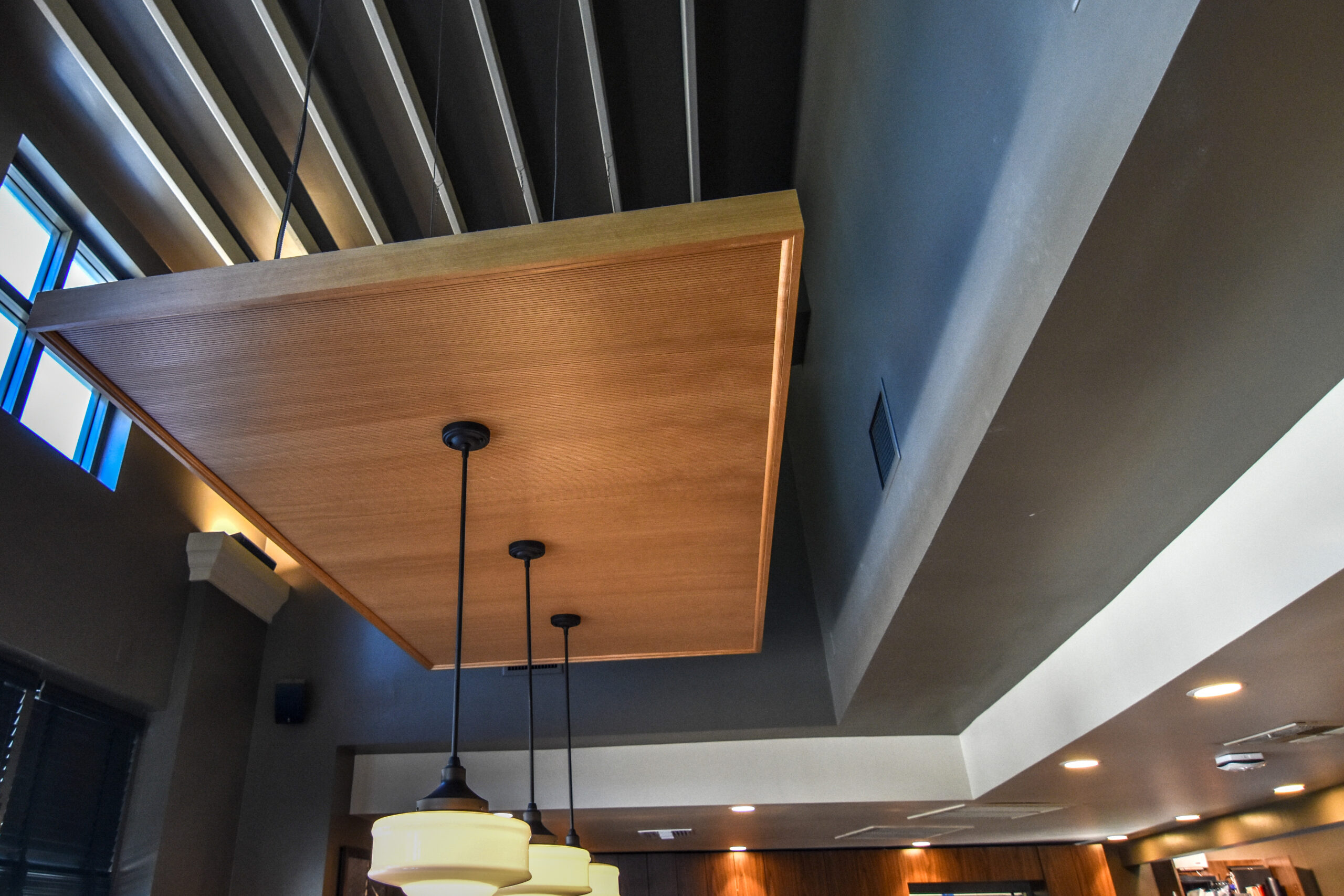
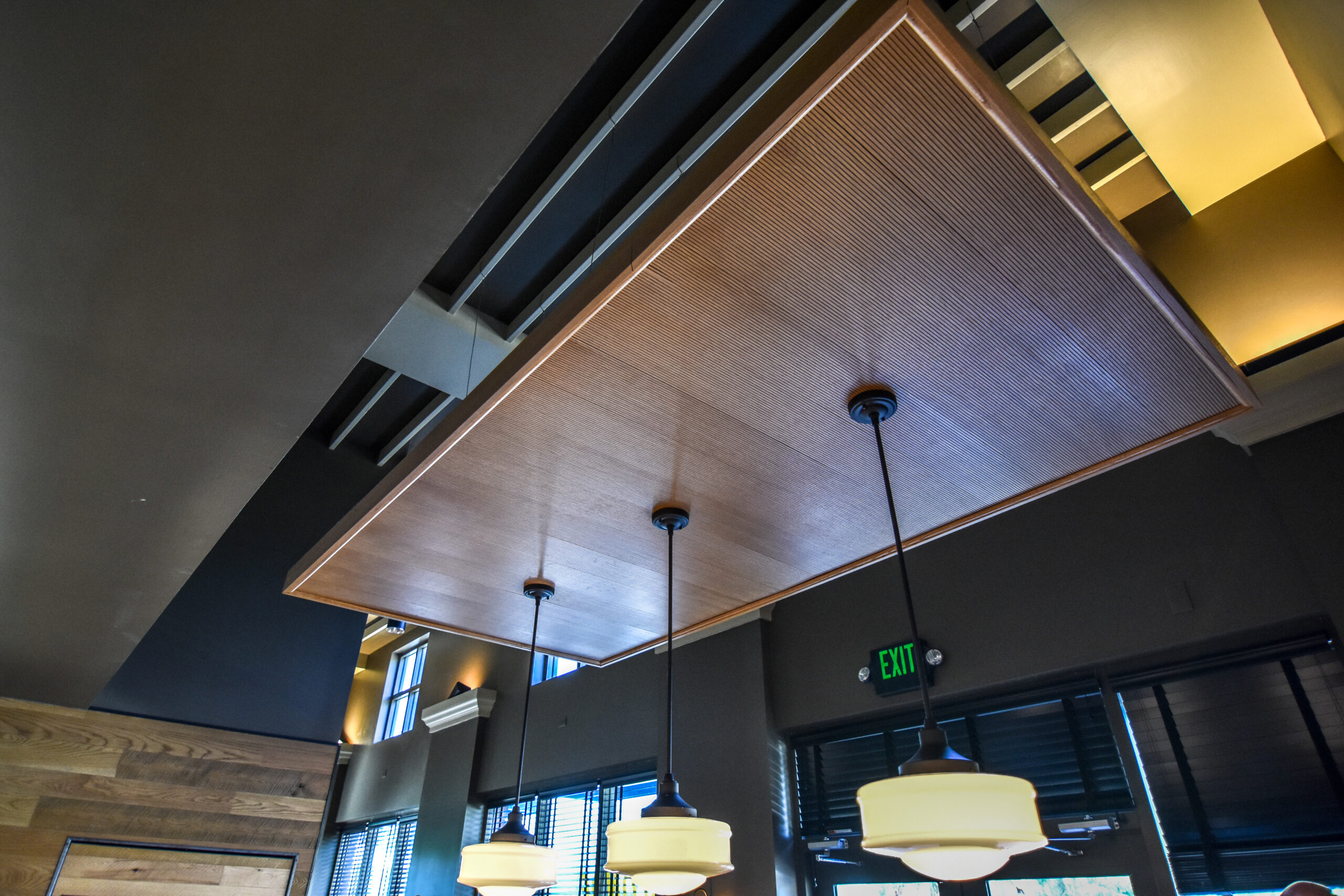
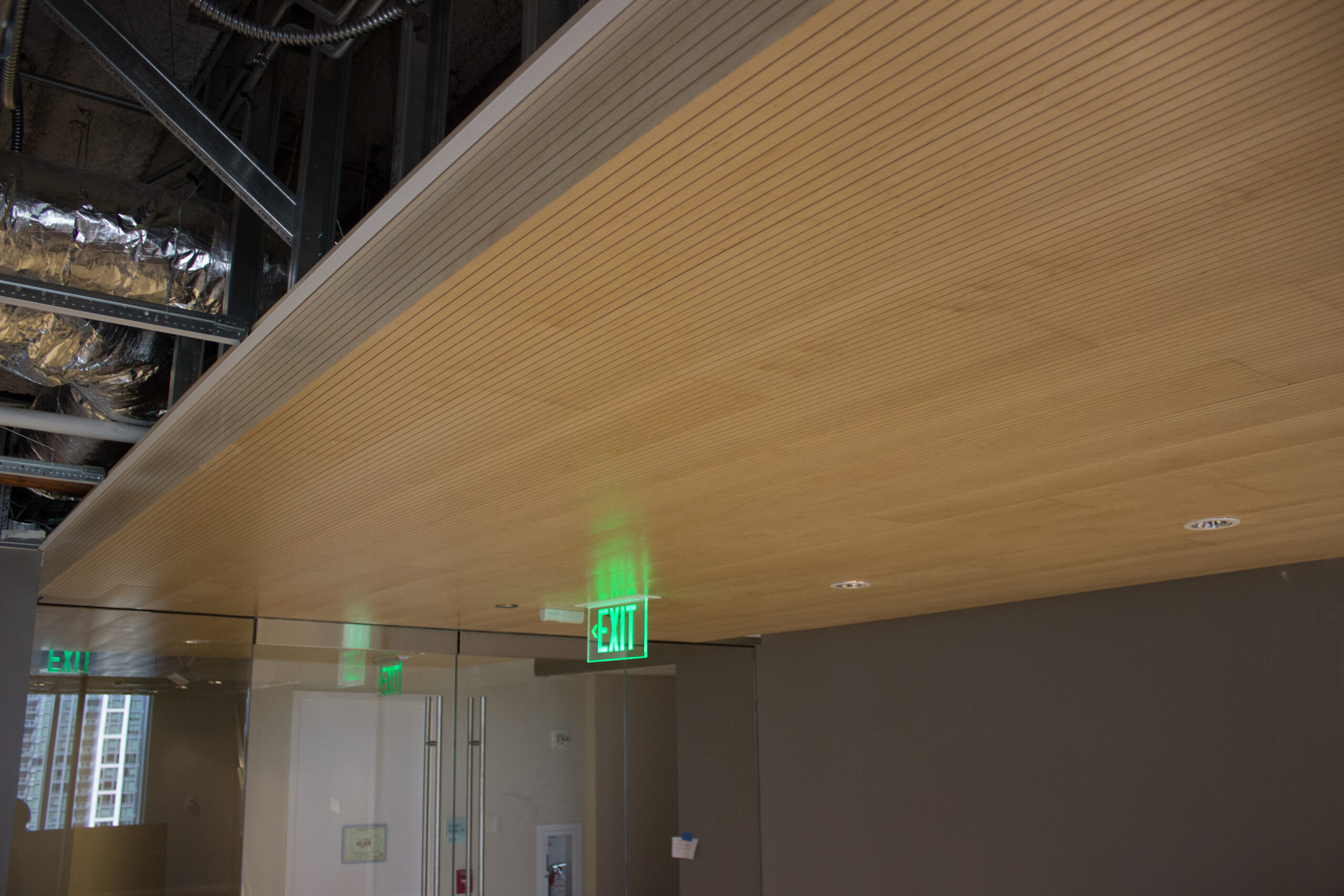
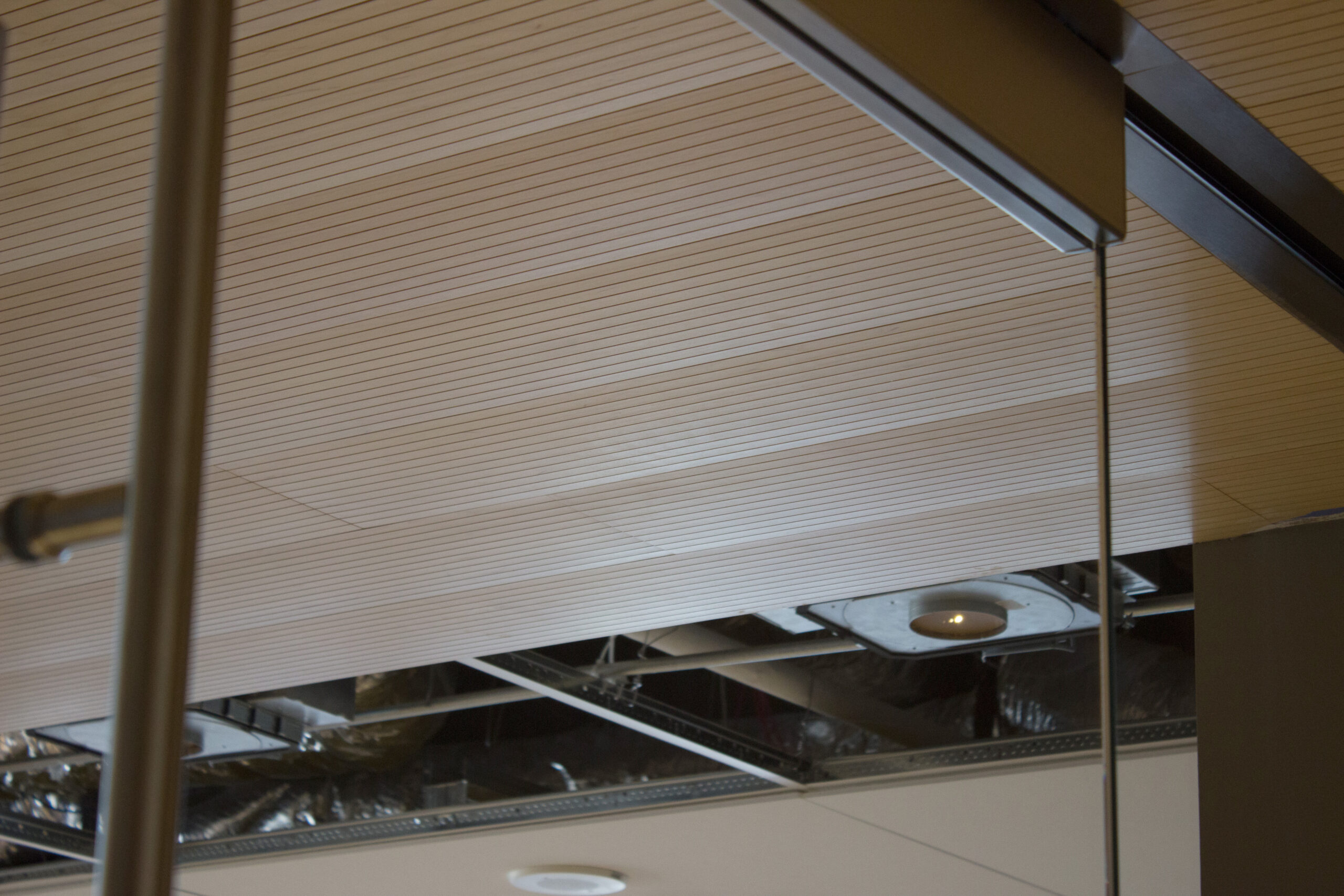
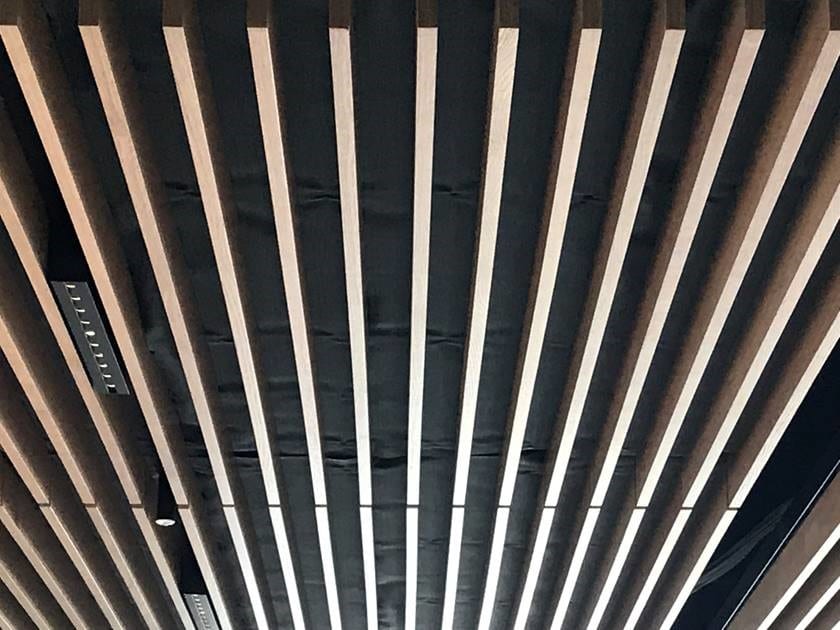
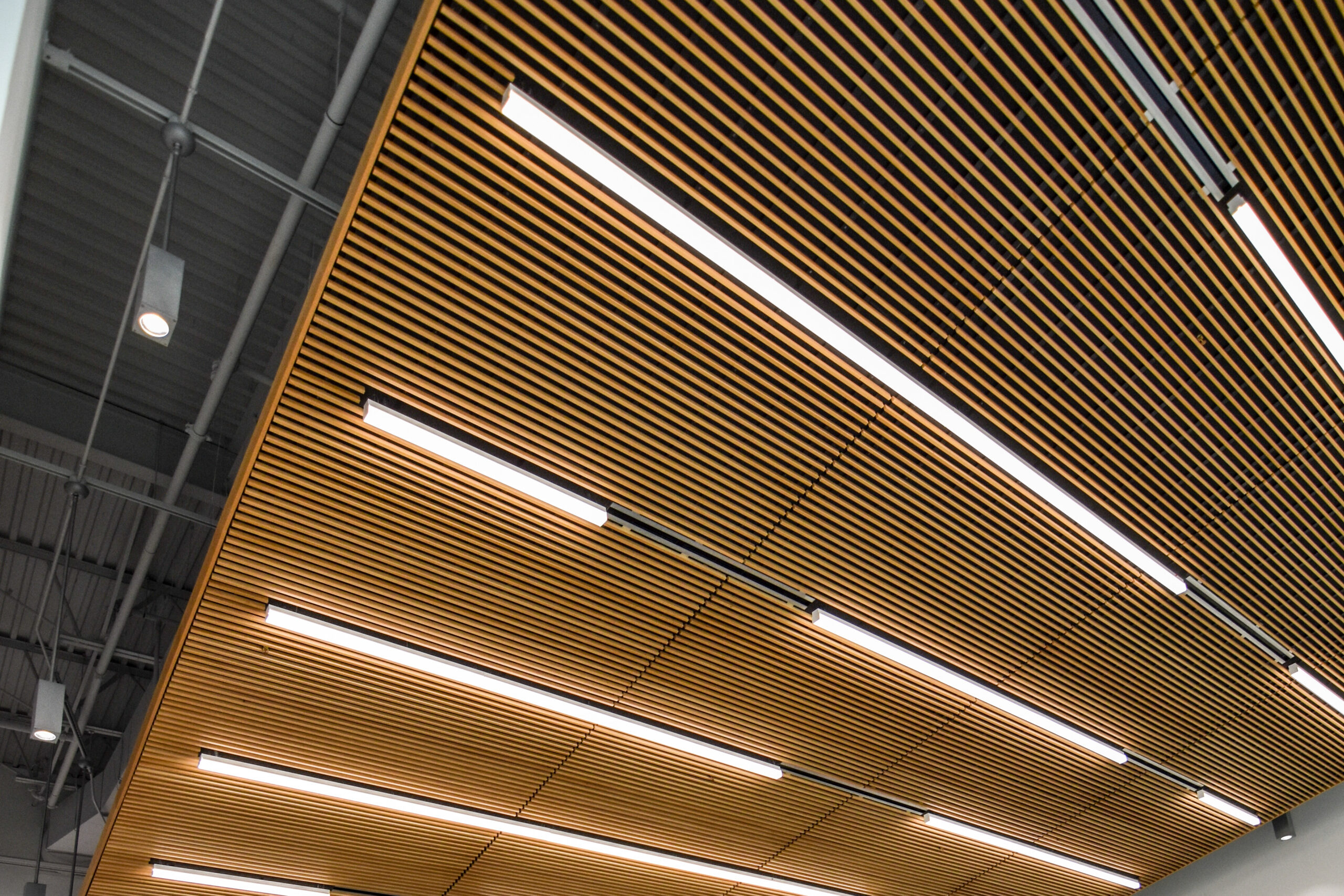
 Don’t forget the crackers! We use cookies to offer you a better site experience and to analyze site traffic. Read about how we use cookies in our
Don’t forget the crackers! We use cookies to offer you a better site experience and to analyze site traffic. Read about how we use cookies in our